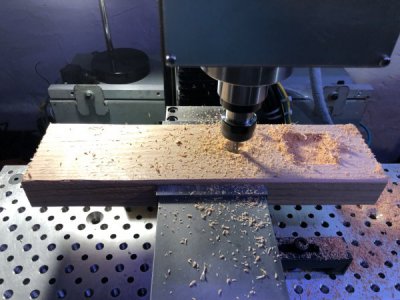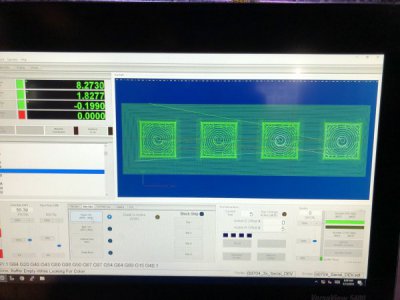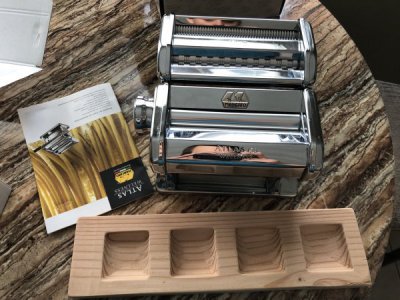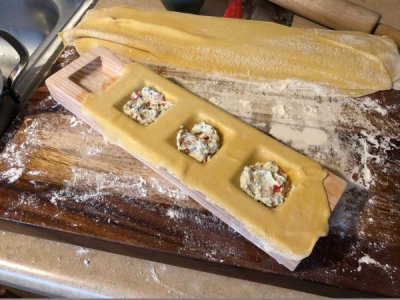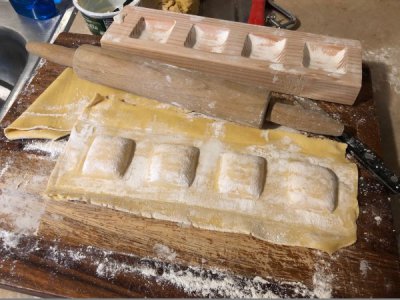I started work on the 4th axis for this machine. It is a pretty simple assembly since the motor and gearbox I already have include the output bearings and mounting surfaces. I have an 8x8" ground right angle plate from Shars which I'm pretty sure I paid $40 for 6 months ago (and it is $80 now - ouch!). I need to remove the ribs from the inside of the plate to give clearance for the motor and gearbox, bore a roughly 5.5" hole through one face with a bolt hole pattern of tapped holes, and machine mounting features on the face which will become the bottom of the unit. I am using a 5000rpm Allen Bradley AC servo motor and a 31:1 Alpha Wittenstein SP+ gearbox. I'll need to make a custom faceplate and mount a 4 or 5" chuck on it.
Here is the motor and gearbox. One limitation will be that my through hole chucking capacity will be limited to the depth of the chuck and the small bore on the end of the gearbox. The electrical cabinet is pre-wired for up to a 1kW motor on the 4th axis. While not quite as good as a harmonic drive, this gearbox is a very low backlash unit and has a large crossed roller bearing on the output face.
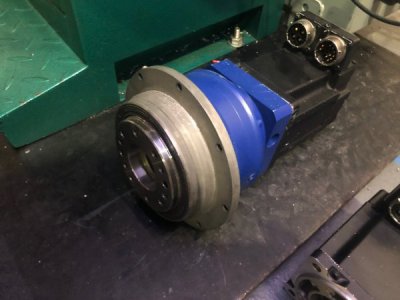
And here is a rough idea of what the angle plate looks like. After removing most of the ribs, I'm a little concerned about structural integrity, so I may machine the inside edges of the right angle (right at the edge of the part) and install new ribs from aluminum or steel plate. These wouldn't interfere with the motor mounting.
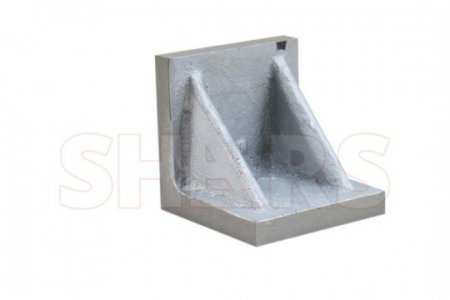
I clamped the angle plate to my machine table and tried to use a 1/2" x 8" long reach carbide endmill to cut all the ribs off in 1 setup. This quickly became obvious that it was not going to work when the chatter and cutting pressure made the tool deflect by at least an 1/8" at the tip of the tool. A lot of this is my poor tool holding capability using TTS and my machine rigidity, but the tool itself had some flex as well.
I switched over to a stubby 1/2" VRX endmill from GARR and worked on machining all the parts of the rib that I could reach. I was doing all the cutting from the MPG pendant. This this was really hogging through material! Seriously I was using a G0704 harder than I would cut on the Bridgeports in college. Unfortunately when the endmill was exiting a cut on one of the ribs, it snagged a corner of cast iron, pulled the table into the cut, and cracked 3 of the flutes off of the cutter. I'm pretty bummed because even though I didn't buy this new, it was one of a small handful of 1/2" tools that I had that were in good shape.
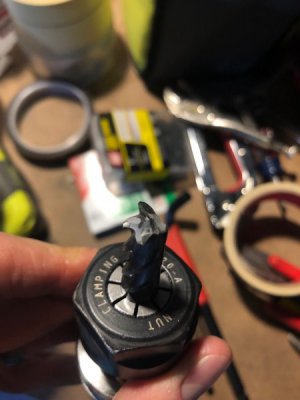
Next I popped in a 3/8" roughing endmill and it did amazing. Normally I preach carbide, but for this high cutting force, low rigidity cut, the flexibility of HSS really was what was needed. I was monitoring the spindle load meter that I added to Mach (discussed in an earlier post) and adjusted my feed rate to keep the meter at 100% (although I spiked to 175% a few times). I'm really happy with this upgrade on the spindle. It is very quiet and has more than enough power and torque for this machine. I was considering changing the belt ratios to give higher speeds than 5000rpm, but after spending some cutting time in the <1000rpm range, I think I will leave them right where they are for the torque.
I kept switching though my different endmills to try to reach as much of the ribs as I could, but eventually I ran out of options. I'm going to flip the plate on its side and come in with another endmill like the VRX I showed above.
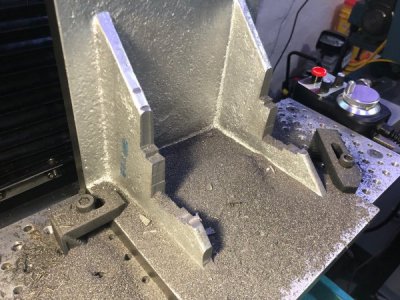
For the first time since I added my pneumatic drawbar, I had issues with tool pullout. It seems like it didn't matter so much about the load on the tool, but rather the tool would slip as soon as chatter started. I ended up cranking all the way down on the drawbar (the pneumatic release wouldn't work at this point), which helped, but even then the tool would slip. I think I might be pushing the limits of what TTS is capable of holding (I'm pushing 2-3HP into the cut).
Something odd that I have always noticed is that my toolholder shanks only get scratched up on the first 1/4" closest to the shoulder. I am wondering if perhaps my collet is bad or maybe the spindle taper is, which may force the collet to close up at the nose before deeper in the spindle. One particularly bad episode of chatter dug these score marks into my tool holder. Not thrilled about that.
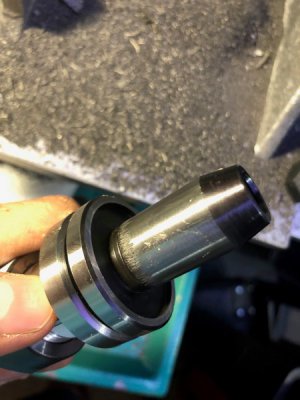
Have to travel for work over the next couple of weeks, but when I am in the shop I am going to be working away at this.
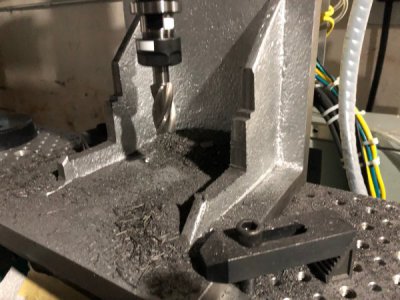
Cheers!
-Mike

